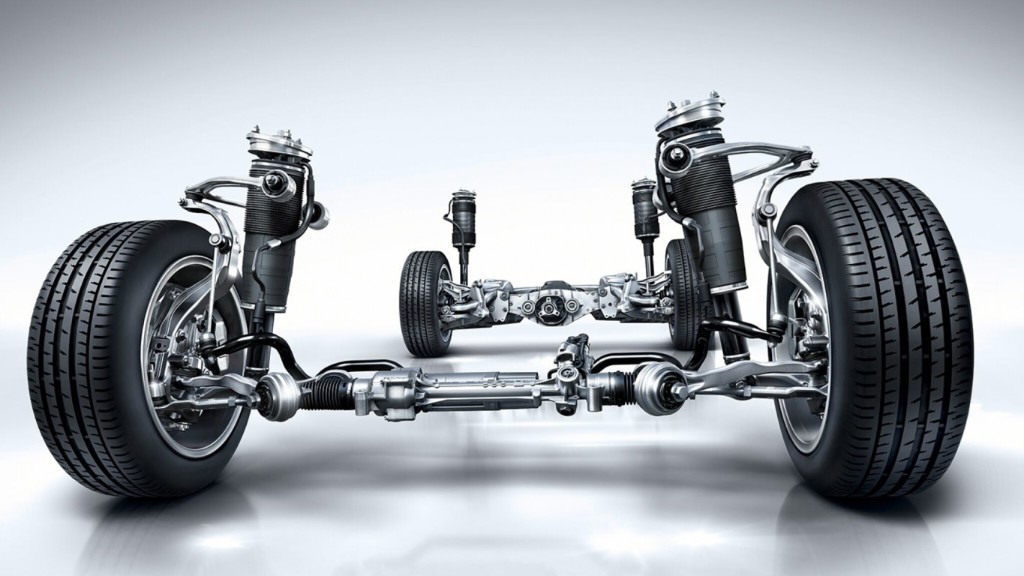
Get To Know Your Car Better: A Detailed Guide To Automotive Terms — Suspension
A car's suspension is a vital system comprising various components designed to enhance stability, ensure a comfortable ride, and optimize handling. It is part of the vehicle's skeleton beneath, absorbing road shocks, vibrations, and uneven terrain to ensure a safe and pleasant journey.
Typical car suspension systems can manage substantial force, with a sedan's front suspension supporting around 900kg to 1,500kg. On rough roads, suspensions can undergo hundreds of adjustments per minute, ensuring a consistently smooth ride. Suspension systems can influence a vehicle's fuel efficiency by reducing drag and improving aerodynamics, resulting in fuel savings.

Before we jump into everything there is to know about a car’s suspension, here is a beginner’s guide to car terms that you need to know.
Car Suspension History
In the early days of the automobile, suspension systems were either rudimentary or non-existent. Vehicles rode on solid metal or wooden wheels, offering little to no cushioning against rough roads. As cars evolved, leaf springs and solid axles became common suspension components. Leaf springs provided some flexibility and shock absorption, while solid axles allowed for relative movement between the wheels.
1930s: Independent Front Suspension:
Independent front suspensions enhanced handling and comfort.
1940s - 1950s: Coil Springs and Hydraulics:
Coil springs and hydraulic shocks improve ride quality.
1950s - 1960s: Air Suspension and Electronics:
Air suspension and electronics introduced adjustable ride height.
Late 20th Century - Present: Modern Developments:
Advanced materials and computer control enhance comfort and handling.

What Are The Advantages Of Having A Suspension?
Having a vehicle suspension offers numerous benefits, making rides safer, more comfortable, and better handling. A well-designed suspension system is vital for a vehicle's performance and safety. It elevates comfort, stability, handling, and safety while extending tyre life, resulting in a more enjoyable and efficient driving experience. Here are the key advantages:
Enhanced Comfort: Suspension systems absorb road shocks, providing a smoother ride by reducing bumps and vibrations.
Improved Stability: Maintaining tyre contact with the road enhances stability, even on uneven surfaces and during turns.
Better Handling: Well-designed suspension offers precise steering and responsiveness, aiding vehicle control, especially during quick manoeuvres.
Reduced Tyre Wear: Properly functioning suspension distributes weight evenly, extending tyre life and saving on replacements.
Safer Braking: Stable suspension ensures all tyres maintain contact, improving braking performance and reducing stopping distances.
Reduced Driver Fatigue: A comfortable, less jolting ride prevents driver fatigue on long trips, promoting safety.
Adaptability: Adjustable suspension allows drivers to customise ride height and stiffness, enhancing off-road capability and highway comfort.
Load Handling: Suspension systems adapt to varying loads, ensuring vehicle stability when carrying passengers or cargo, crucial for trucks and SUVs.
Off-Road Capability: Robust suspension enables off-road vehicles to tackle rough terrain, absorb shocks, and maintain traction.
Reduced Vehicle Noise: By isolating road impacts, suspension systems create a quieter cabin for a more pleasant driving environment.

Different Components In A Suspension
Types Of Car Suspension
What Is A Suspension Setup?
Different Types Of Suspension Setups
Read the Detailed Guide To Automotive Terms Featuring The Suspension article to know more on the aforementioned topics. Visit DubiCars's Blog for more content on all things automotive.
Other Automotive Guides: